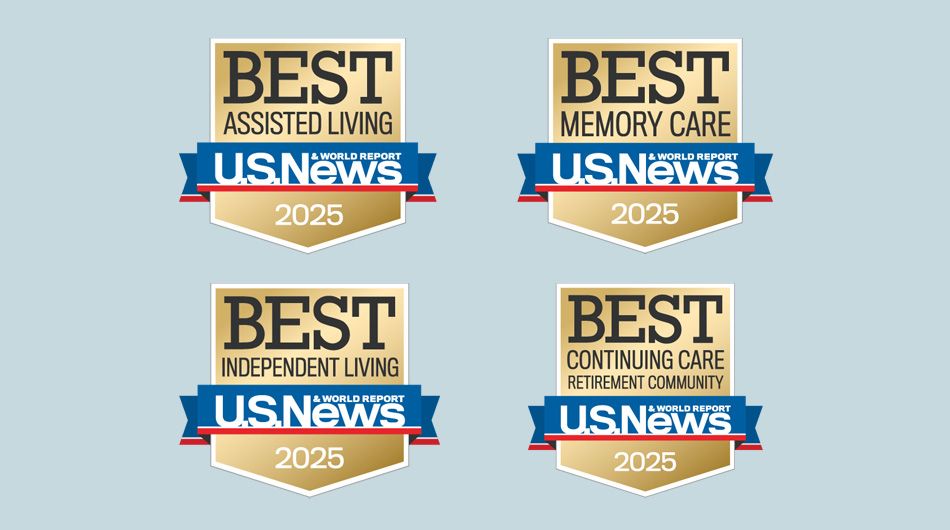For healthcare workers especially, we care for people who are in their own crises and place the healing and wellbeing of others first. But what happens when the caregiver needs to be taken care of? If you are a leader in your organization, are you prepared to deal with crises that your staff may be experiencing?
I live in the mountains of Virginia that was recently affected by flooding and damage from Hurricane Helene. Nearby areas in my state faced even more significant impacts, while communities in Western North Carolina, Tennessee, South Carolina, Georgia, and Florida experienced devastating destruction from the storm. It got me thinking, as I stood during the storm in my backyard with water that was above my ankles, how are people coping with even greater crises than my wet shoes and temporary inconvenience?
From intense weather events to economic hardships to personal emotional or mental concerns, many people have a lot of crises to manage. From having your home damaged by weather to struggling to afford groceries to feeling anxiety about things that may be happening in your life or the life of loved ones—everyone can feel stressed and strained. Some of these crises may be hidden and people get through their day without anyone realizing what may be going on in their personal lives.
For healthcare workers especially, we care for people who are in their own crises and place the healing and wellbeing of others first. But what happens when the caregiver needs to be taken care of? If you are a leader in your organization, are you prepared to deal with crises that your staff may be experiencing? As the year continues and crises come and go, consider these tips to help your staff or your peers cope with difficult life circumstances:
C = Compassion
The first thing to remember during a crisis is to keep your compassion. Be respectful and empathetic when someone comes to you with a life event that is causing them distress. While your own coping mechanisms might seem stronger, you can never judge the reactions and feelings of another person. Remain compassionate and understanding, as you navigate how to help relieve stress. Showing compassion will help your staff understand that you are approachable.
A = Approachability
As a leader, it is particularly important to remind your staff that you are available to them. Make efforts to create an open, safe environment where employees know that they can come to you for help with a true crisis. Also remember that while you should be approachable, you must also have clear boundaries as a leader. You’ll need to balance being overly involved in personal issues versus providing the right resources when an employee is seeking your help.
R = Resource Management
Speaking of resources, if your organization has an Employee Assistance Program [EAP], make sure every staff member knows what it offers and how to access it. EAPs are created to address crises, including issues affecting personal wellbeing such as grief, problems with substance abuse and addiction, difficult health diagnoses, and more—including trauma events and community emergencies. EAPs allow leaders to provide free resources to employees to help them manage a crisis, without having to personally solve it for them. If you don’t have an EAP, talk to other leaders in your organization and find out how to best handle crisis situations for employees, including discussing how to create a new EAP. Otherwise, gather your staff and make it a team effort to compile a list of local resources that are available now. Provide a tangible collection of helpful community resources, local counselors, and free crisis hotlines to reach help by phone or online urgently.
Check out the American Psychological Association’s extensive list of crisis hotlines.
Think outside of the box if you are creating your own resource list. Consider adding a list of local food banks for people having difficulties affording groceries. Check local banks and financial advisor groups for schedules of free teaching sessions for employees worried about their finances. Call local community centers and churches to see what kind of free counseling or support group meetings are available, too. For natural disaster crises, have a list of local emergency support services at the ready, including reminding staff how to file claims at www.disasterassistance.gov.
E = Encouragement
If you do have an employee or peer come to you with a crisis, remember that they will need encouragement, potentially for weeks to come. Separate from compassion, encouragement should come in the form of acknowledging their resilience in a crisis situation, reinforcing their work strengths, and generally helping them adapt as they manage their crisis. Also remind staff that utilizing those resources that are available is a sign of strength, not weakness.
In our trying times, no matter how big or small the crisis might be, just be there for your employees and each other. Sometimes sharing difficult experiences and how you managed to survive them also helps. Talk about it and keep conversations open while maintaining EAPs and resource lists for anyone who needs an extra bit of help to one day work through our crises a little easier in the future.
Related Posts








